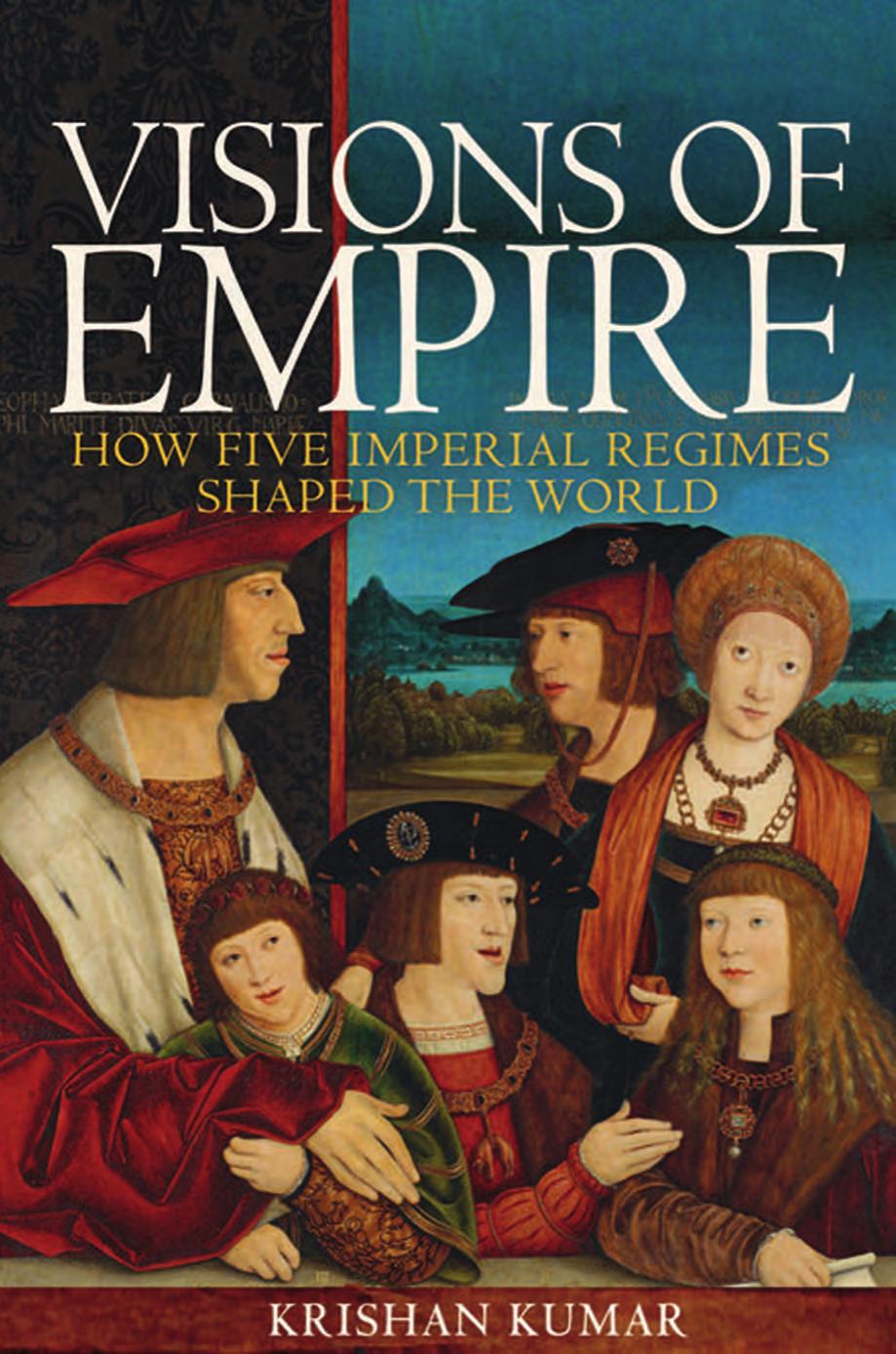Visions of Empire: How Five Imperial Regimes Shaped the World by Krishan Kumar

Author:Krishan Kumar [Kumar, Krishan]
Language: eng
Format: epub, mobi, azw3, pdf
ISBN: 9781400884919
Publisher: Princeton University Press
Published: 2017-04-16T21:00:00+00:00
Nationalities and the National
Question in the Soviet Union
Like the tsarist empire, the Soviet Empire covered one-sixth of the earth’s land surface, second in size only to the British Empire. Like the tsarist empire the Soviet Empire contained more than 100 nations and nationalities. In 1989, 22 of these nations had more than a million members each, and 55 had more than 100,000 members. Ukrainians (15.46 percent)—the largest non-Russian group, as in the tsarist empire—and Belorussians (3.51 percent) made up about the same proportions as under the tsarist regime, as did most other non-Russian groups. The principal exceptions were Poles and Jews, whose proportions dropped from 6 and 4 percent, respectively, to less than 1 percent in both cases. The biggest change came with the doubling of the Central Asian proportion—Kazakhs, Uzbeks, Tadzhiks, Turkmen, and others—from about 6 percent in 1897 to over 12 percent in 1989, mostly owing to natural increase (Kaiser 1994: 30–31; Kappeler 2001: 397–99; Hirsch 2005: 320–23).
The relation of Russia to the Soviet Union was structurally similar to that of Russia to the tsarist empire. That is, Russia and Russians dominated, to an even greater extent than formerly. The Russian Republic (RSFSR) made up 90 percent of the Union’s territory and 72 percent of its population. Not all of its people were ethnic Russians of course, though the proportion increased from 73.4 percent in 1926 to 82.6 percent by 1979 (Simon 1991: 376). In terms of the total population of the Soviet Union, ethnic Russians made up 50.8 percent in 1989, as compared with 44.3 percent in the last years of the tsarist empire (Kappeler 2001: 397). Thus ethnic Russians, even without “Little” and “White” Russians, were an absolute majority, if only just, for the whole life of the Soviet Union. This was significant, given that with the development of Ukrainian and to a lesser extent Belorussian national consciousness, and the recognition of Ukraine and Belarus as separate union republics, it was less easy for Great Russians to make the traditional assumption that all could be counted as ethnic Russians. It was equally telling that it was Ukraine’s declaration of independence in July 1990 that heralded the breakup of the Soviet Union.
In relation to the nationalities, the Russian Revolution wished to make a complete break with the tsarist past. There was to be no oppression of the nationalities, no new “prison of peoples.” The Bolsheviks inveighed repeatedly against the “Great Russian chauvinism” of the tsarist era, the domination of non-Russians (including Ukrainians and Belorussians) by Great Russians. The Soviet Union was conceived as a federation of nationalities, with Russia just one of the nationalities. According to all the constitutions of the Soviet Union—from the 1922 Union Treaty to the last, the Constitution of 1977—“the union republics were voluntary participants in a confederation of sovereign states. Each of the fifteen union republics retained a number of rights which were said to guarantee their sovereign status, including their own constitutions, flags and anthems, the right to enter into foreign
Download
Visions of Empire: How Five Imperial Regimes Shaped the World by Krishan Kumar.mobi
Visions of Empire: How Five Imperial Regimes Shaped the World by Krishan Kumar.azw3
Visions of Empire: How Five Imperial Regimes Shaped the World by Krishan Kumar.pdf
This site does not store any files on its server. We only index and link to content provided by other sites. Please contact the content providers to delete copyright contents if any and email us, we'll remove relevant links or contents immediately.
| Africa | Americas |
| Arctic & Antarctica | Asia |
| Australia & Oceania | Europe |
| Middle East | Russia |
| United States | World |
| Ancient Civilizations | Military |
| Historical Study & Educational Resources |
Cecilia; Or, Memoirs of an Heiress — Volume 1 by Fanny Burney(32078)
Cecilia; Or, Memoirs of an Heiress — Volume 3 by Fanny Burney(31470)
Cecilia; Or, Memoirs of an Heiress — Volume 2 by Fanny Burney(31420)
The Secret History by Donna Tartt(18224)
Sapiens: A Brief History of Humankind by Yuval Noah Harari(13999)
Leonardo da Vinci by Walter Isaacson(12815)
The Radium Girls by Kate Moore(11639)
Sapiens by Yuval Noah Harari(5128)
How Democracies Die by Steven Levitsky & Daniel Ziblatt(4970)
The Wind in My Hair by Masih Alinejad(4852)
Homo Deus: A Brief History of Tomorrow by Yuval Noah Harari(4694)
Endurance: Shackleton's Incredible Voyage by Alfred Lansing(4518)
Man's Search for Meaning by Viktor Frankl(4299)
The Silk Roads by Peter Frankopan(4277)
Millionaire: The Philanderer, Gambler, and Duelist Who Invented Modern Finance by Janet Gleeson(4116)
The Rape of Nanking by Iris Chang(4025)
Hitler in Los Angeles by Steven J. Ross(3803)
Joan of Arc by Mary Gordon(3797)
The Motorcycle Diaries by Ernesto Che Guevara(3795)
